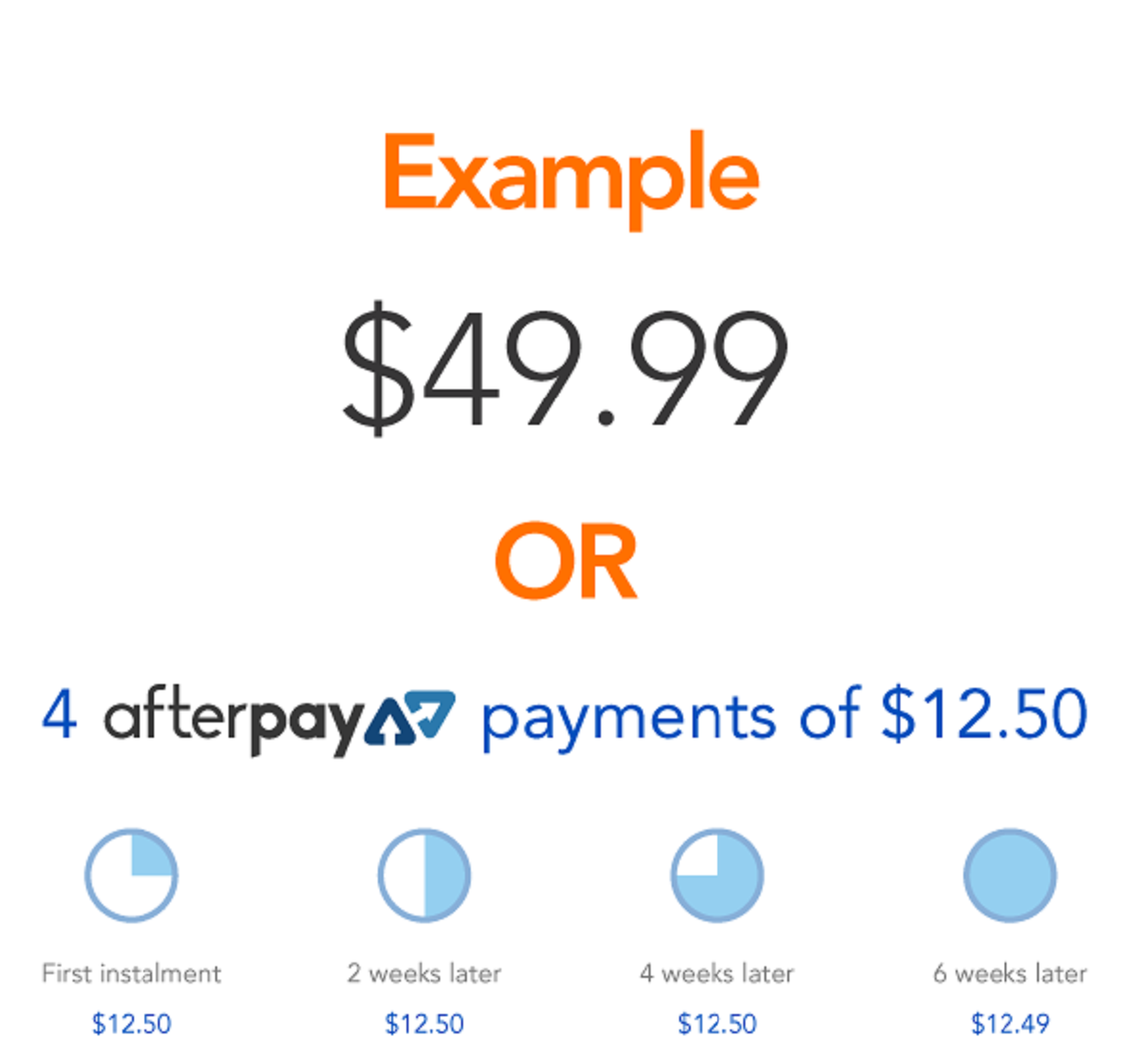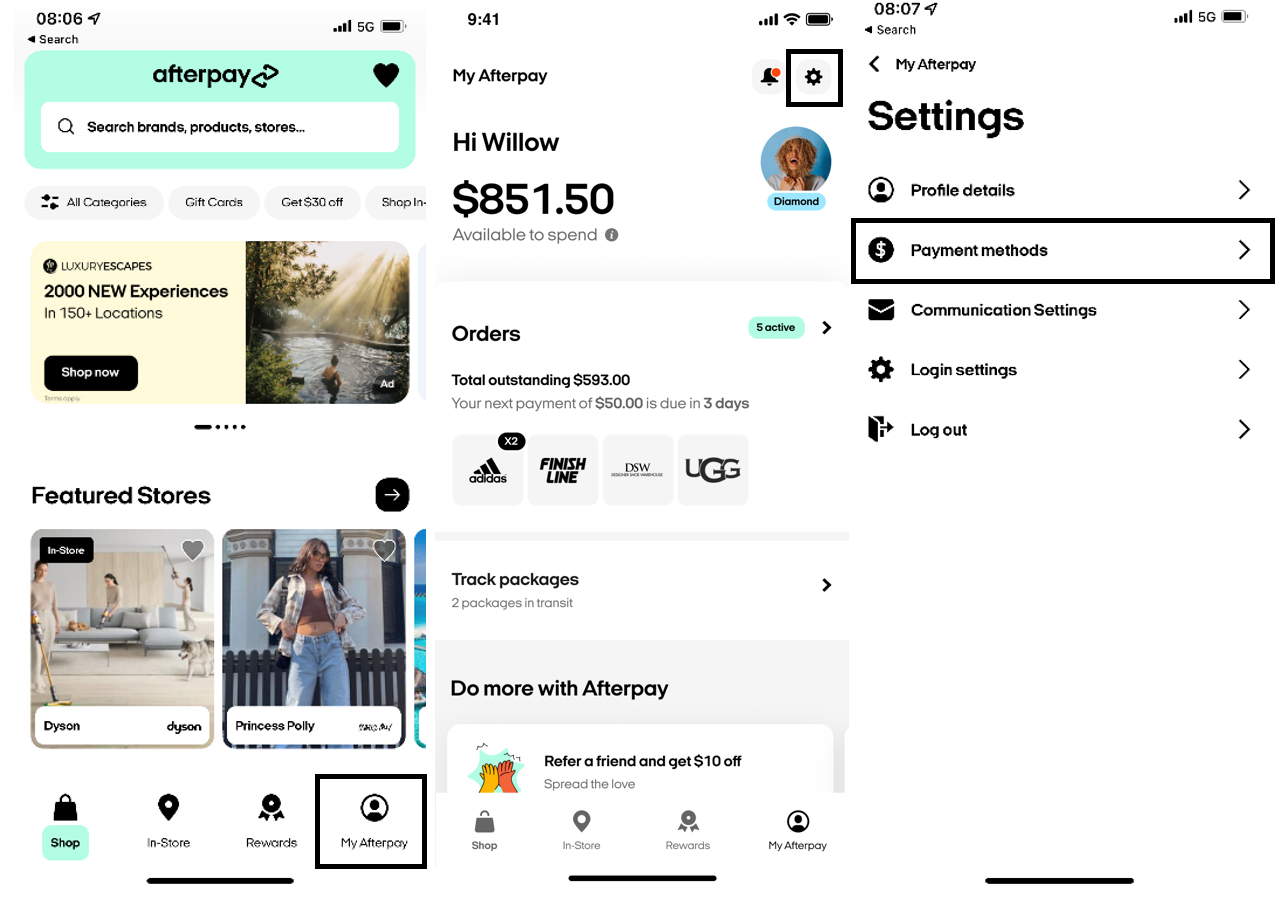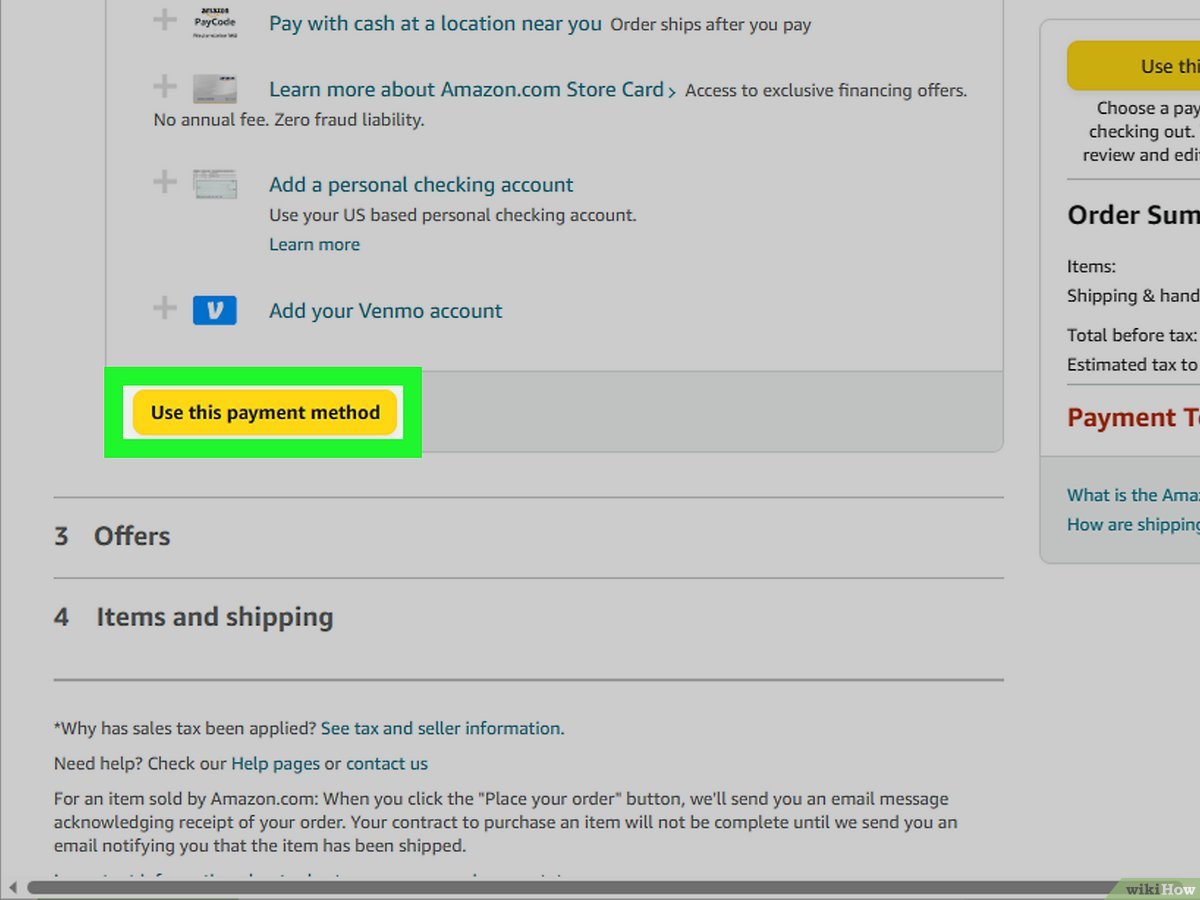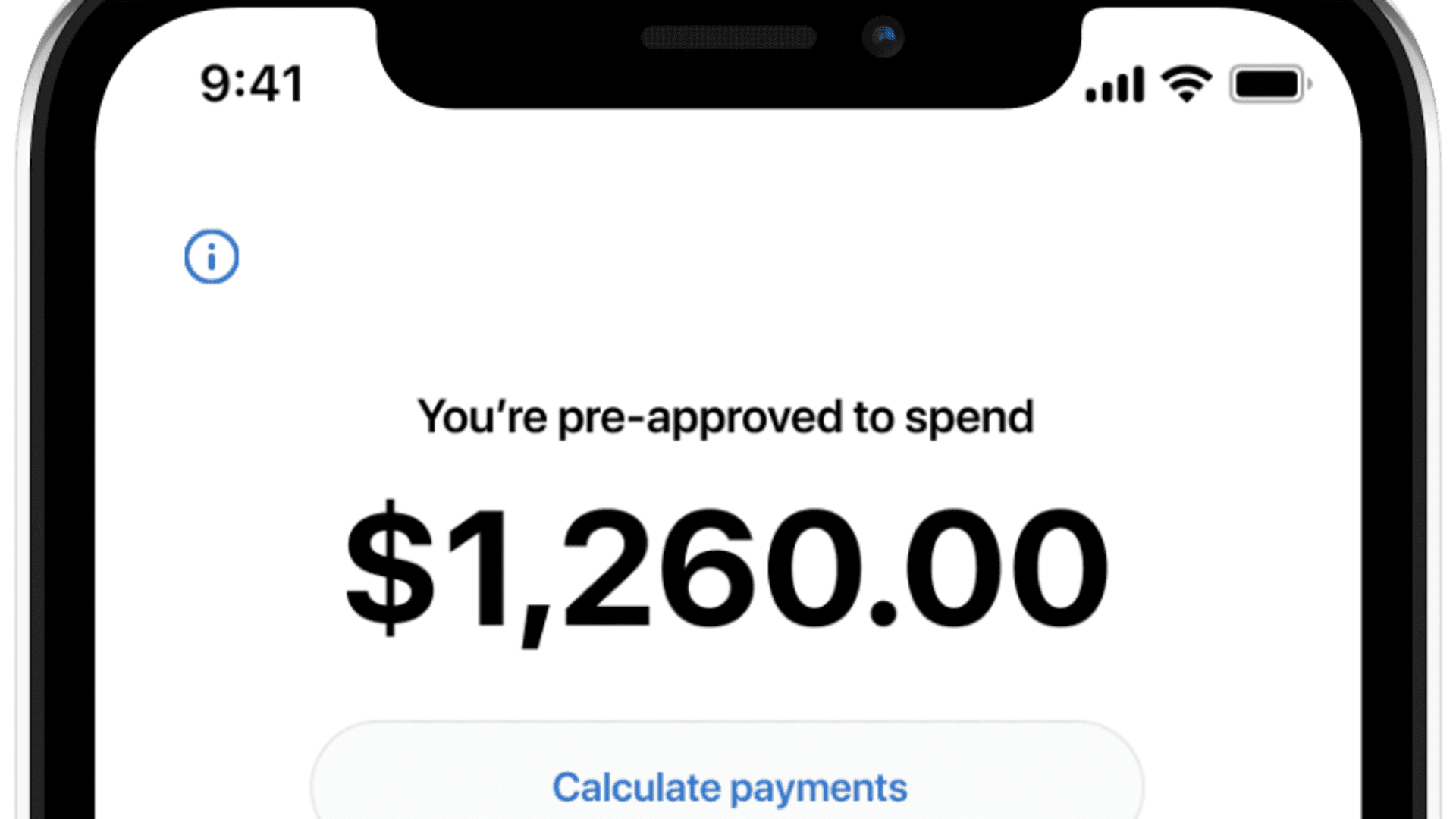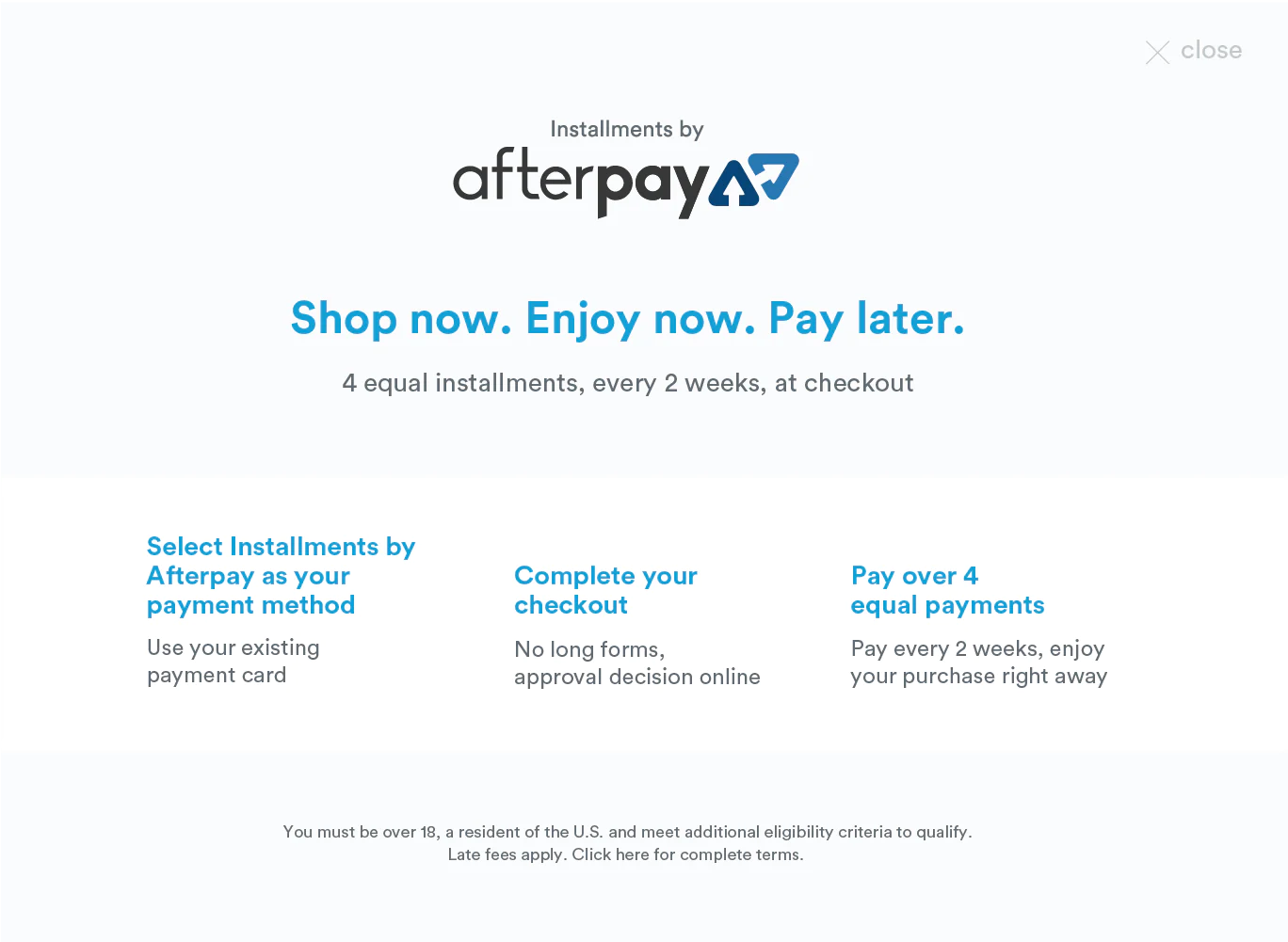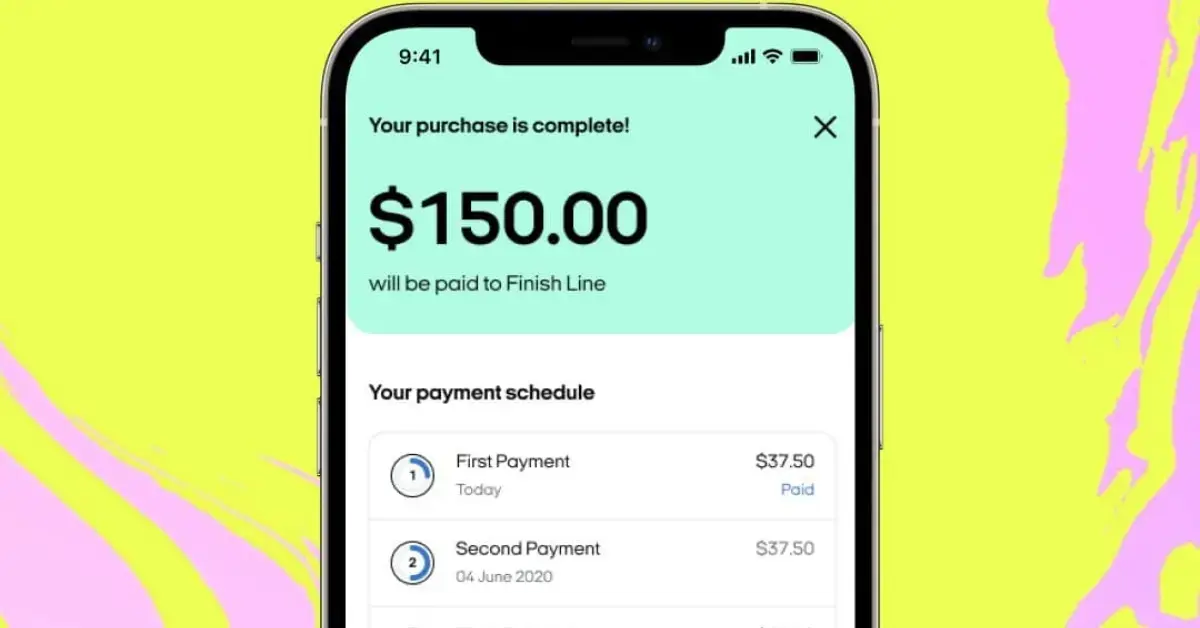Introduction
Afterpay has gained significant popularity as a modern payment option, offering customers the convenience of spreading their purchases over a period of time. This buy-now-pay-later service allows shoppers to make purchases and pay for them in installments, without the need for traditional credit checks or upfront payments.
In this article, we will delve into the details of how many payments are typically involved when using Afterpay. Whether you’re considering using Afterpay for your next purchase or simply curious about how the payment structure works, we’ve got you covered.
Afterpay, founded in Australia in 2014, has quickly expanded its reach to countries around the world, including the United States, Canada, and the United Kingdom. Its user-friendly platform and flexible payment options have attracted a wide customer base, making it a popular alternative to traditional credit cards.
With Afterpay, customers can divide their total purchase amount into four equal installments, to be paid every two weeks. This makes budgeting for larger purchases more manageable, as it allows customers to pay a fraction of the total cost upfront and spread out the remaining payments over a period of time.
Additionally, Afterpay does not charge any interest or fees if payments are made on time. This makes it an appealing option for those looking to avoid hefty finance charges associated with credit card payments.
However, it is important to note that late fees and penalties may be incurred if payments are not made on time. These charges can vary depending on the merchant and the country in which the purchase is made.
Now that we have introduced Afterpay and its basic payment structure, let’s explore in detail how many payments are usually involved and what factors might affect the payment schedule.
What is Afterpay?
Afterpay is a payment platform that allows consumers to make purchases and pay for them in installments over a specified period of time. It simplifies the payment process by breaking down the total cost into smaller, more manageable payments. This innovative payment option has gained popularity among shoppers who prefer flexibility and convenience when it comes to their purchases.
The concept of Afterpay is simple: customers can buy the products they desire and pay for them in four equal installments. These installments are typically due every two weeks, providing customers with a predictable payment schedule.
One of the key advantages of Afterpay is that it does not require a credit check or the need for customers to provide their credit card information upfront. This makes it particularly appealing to those who may not have a credit card or prefer to avoid traditional credit options.
The process of using Afterpay is straightforward. Customers simply select Afterpay as their preferred payment method when checking out on a merchant’s website or in-store. They then create an Afterpay account or log into their existing one. The total cost of the purchase is divided into four equal parts, and the first installment is paid at the time of purchase. The remaining three installments are automatically deducted from the customer’s chosen payment method every two weeks.
Afterpay offers a seamless and user-friendly experience for both consumers and merchants. It allows customers to enjoy their purchases immediately, without incurring any interest fees or additional charges (providing payments are made on time). Merchants, on the other hand, are paid in full by Afterpay upfront and are able to offer their customers a flexible payment option that can potentially increase sales.
Afterpay has become increasingly popular across a wide range of industries, including fashion, beauty, electronics, and home goods. Its presence in multiple countries, along with partnerships with major retailers and online platforms, has contributed to its widespread adoption.
In the following sections, we will explore how many payments are typically involved when using Afterpay, the factors that can affect the payment schedule, and merchant policies regarding Afterpay payments.
How Many Payments on Afterpay?
When using Afterpay, customers typically make a total of four payments for their purchases. These payments are spread out over a period of eight weeks, with each installment due every two weeks. This payment structure allows customers to pay off their purchases in smaller, more manageable increments.
Afterpay’s four-payment system not only provides customers with a clear payment schedule but also helps them avoid the burden of making a single large payment upfront. This flexibility is particularly useful when purchasing more expensive items or when budgeting is a priority.
An important point to note is that the payment schedule is automatically set by Afterpay. Customers do not have the option to adjust the frequency or amount of the payments. However, they can choose their preferred payment method, such as linking a credit or debit card to their Afterpay account.
Each payment is typically a quarter of the total purchase amount. For example, if a customer spends $200 on Afterpay, they will make four payments of $50 each. It is important to keep in mind that the initial payment is due at the time of purchase, while the remaining three payments will be deducted from the customer’s chosen payment method every two weeks.
It is worth mentioning that Afterpay does not charge any interest on payments, making it an appealing option for those looking to avoid additional finance charges commonly associated with credit cards or traditional loans.
In order to ensure the convenience and ease of making payments, Afterpay sends reminders to customers via email or text message when a payment is due. These reminders help customers stay on track with their payment schedule and avoid any potential late fees or penalties.
By making all four payments on time, customers can successfully complete their Afterpay transactions without incurring any additional charges. However, failing to make a payment on time may result in late fees and penalties, which can vary depending on the specific merchant and the country in which the purchase was made.
Now that we have covered the typical number of payments on Afterpay, let’s explore the factors that can influence the payment schedule and the policies set by merchants regarding Afterpay payments.
Factors to Consider
While Afterpay offers a convenient and flexible payment option, there are several factors to consider before using this service. Understanding these factors can help you make informed decisions about your purchases and ensure a smooth payment experience.
1. Eligibility: Before using Afterpay, it’s important to check if you meet the eligibility criteria. Afterpay requires customers to be at least 18 years old and have a valid debit or credit card to link to their account. Some countries may have additional eligibility requirements, so make sure to familiarize yourself with the specific rules in your region.
2. Budgeting: While Afterpay allows you to spread out your payments, it’s crucial to assess your financial situation and ensure that you can comfortably meet the payment obligations. Consider your income, expenses, and other financial commitments to determine if adding Afterpay payments aligns with your budgeting goals.
3. Payment Schedule: Afterpay automatically sets the payment schedule, with four equal installments due every two weeks. It’s important to keep track of these payment dates and make sure you have sufficient funds in your account to cover each installment. Set reminders or utilize the notifications provided by Afterpay to stay on top of your payment obligations.
4. Merchants’ Acceptance: While Afterpay is widely accepted by an array of merchants, it’s essential to check if the specific store or online platform you wish to purchase from offers Afterpay as a payment option. Look for the Afterpay logo or payment information during the checkout process to confirm if Afterpay is available.
5. Late Fees and Penalties: Failure to make payments on time can result in late fees and penalties. Take note of the merchant’s specific terms regarding late payments, as these can vary. To avoid additional charges, ensure that you have sufficient funds in your account before each payment due date.
6. Afterpay Limit: Afterpay sets an initial spending limit for new customers. This limit may increase over time as you build a positive payment history with Afterpay. Understanding your Afterpay limit can help you plan your purchases accordingly and prevent any unexpected payment issues.
By considering these factors, you can determine if using Afterpay aligns with your financial goals and make informed decisions about your purchases. Responsible budgeting and regular payment monitoring will help you make the most of this flexible payment option without any unnecessary financial stress.
Next, we’ll focus on the specific policies set by merchants regarding Afterpay payments.
Merchant’s Policies
When using Afterpay, it is important to familiarize yourself with the specific policies set by the merchants you are purchasing from. While Afterpay provides the platform for payment, individual merchants may have their own terms and conditions that apply to Afterpay transactions.
Here are some common policies that merchants may have in place when it comes to Afterpay:
1. Minimum Purchase Amount: Some merchants may require a minimum purchase amount to be eligible for Afterpay. This means that you may need to reach a certain spending threshold in order to use Afterpay as a payment option. Be sure to check the merchant’s terms and conditions or FAQs for information on minimum purchase requirements.
2. Exclusions: Certain products or categories may be excluded from being purchased with Afterpay. This can include items such as gift cards, services, or pre-order items. The exclusion of specific products or categories is determined by the individual merchant, so it’s important to review the product details or contact customer support if you have any doubts about whether Afterpay can be used for your desired purchase.
3. Refunds and Returns: Merchants have their own refund and return policies that may apply to Afterpay transactions. It’s important to understand the merchant’s policies regarding refunds and returns, as it can impact your Afterpay payments. In some cases, refunds may be issued as Afterpay credits rather than cash refunds. Familiarize yourself with the merchant’s policies to ensure a smooth experience in case you need to return or exchange an item.
4. Synchronization with Inventory: As Afterpay allows customers to receive their purchases immediately while paying over time, it’s important for merchants to keep their inventory updated and synchronized with Afterpay transactions. This ensures that items are not oversold and helps prevent any issues with fulfilling orders.
5. Communication and Customer Support: Merchants typically have dedicated customer support channels to assist with any questions or concerns related to Afterpay transactions. If you encounter any issues or have inquiries specific to your purchase, reach out to the merchant’s customer support team for assistance.
Understanding and adhering to the merchant’s policies will help ensure a smooth transaction process when using Afterpay. Take the time to review the merchant’s terms and conditions or contact their customer support if you have any questions or need clarification on their Afterpay policies.
Now that we’ve covered the merchant’s policies, let’s dive into the payment schedules and due dates associated with Afterpay transactions.
Payment Schedules
Afterpay follows a specific payment schedule that divides the total purchase amount into four equal installments. Each installment is due every two weeks, resulting in a total payment period of eight weeks.
Here’s an overview of how the payment schedule works:
1. Initial Payment: At the time of purchase, the first installment is due. This initial payment is typically 25% of the total purchase amount, including any applicable taxes or fees. It is important to ensure that you have sufficient funds in your linked payment method when making the initial payment.
2. Subsequent Payments: Following the initial payment, the remaining three installments are automatically deducted from your chosen payment method every two weeks. These payments are also 25% of the total purchase amount and continue until the balance is paid in full.
3. Due Dates: Afterpay provides you with clear due dates for each installment. These due dates are typically set on your payment schedule, with payments falling every two weeks. It is essential to stay mindful of these due dates and ensure that you have enough funds in your account to cover each payment. Late payments may result in additional fees or penalties determined by the merchant.
4. Payment Methods: Afterpay allows you to link your debit or credit card to your Afterpay account as your preferred payment method. It’s important to ensure that the linked payment method is active and has sufficient funds available for the scheduled payments. If necessary, you can update your payment method in the Afterpay app or on the Afterpay website.
5. Payment Reminders: Afterpay understands the importance of timely payments and sends reminders to customers via email and text message before each payment is due. These reminders serve as a helpful tool to stay on top of your payment schedule and avoid any potential late fees or penalties.
By adhering to the payment schedule and making timely payments, you can complete your Afterpay transactions without any additional charges. It’s important to monitor your payment obligations and allocate funds accordingly to fulfill your payment commitments within the designated timeframe.
Next, we’ll explore the potential late fees and penalties associated with Afterpay transactions, as well as the importance of staying informed about your Afterpay limit.
Late Fees and Penalties
While Afterpay offers the convenience of spreading payments over time, it is crucial to make timely payments to avoid incurring late fees and penalties. Failure to make payments on time could have financial implications and may affect your future Afterpay transactions. Understanding the late fees and penalties can help you plan your payments effectively and avoid any additional charges.
If a payment is not made by the due date, Afterpay typically charges a late fee. The specific late fee amount can vary depending on the country you are in or the merchant’s policies. It is important to review the terms and conditions of your Afterpay agreement or contact Afterpay customer support for precise information about the late fee structure.
It is worth noting that Afterpay has implemented measures to help customers avoid late payments. Customers are usually provided with reminders via email or text message as their payment due date approaches. These reminders serve as a helpful tool to prompt timely payments and reduce the likelihood of incurring late fees.
If a payment is not made within ten days of the due date, Afterpay may charge an additional fee or penalty. This penalty can be a percentage of the total outstanding balance or a fixed amount, determined by the merchant or Afterpay. To avoid these penalties, it is crucial to ensure that you have sufficient funds available in your linked payment method and make timely payments.
If you encounter difficulty in making a payment on time, it is recommended to contact Afterpay’s customer service as soon as possible. They may be able to provide assistance and explore potential solutions to help you avoid late fees or penalties. Communicating with Afterpay demonstrates a proactive approach towards your payment obligations and can lead to a more favorable outcome.
It’s important to remember that late fees and penalties incurred through Afterpay are separate from any fees or penalties set by your bank or card issuer. If you have any questions or concerns about late fees, it is advisable to contact Afterpay directly or review their FAQs and customer support resources for accurate and up-to-date information.
Being aware of the potential late fees and penalties associated with Afterpay transactions can help you manage your payments effectively and avoid unnecessary financial burden. By making payments on time and staying informed about your payment obligations, you can fully utilize the benefits of Afterpay without incurring any additional charges.
Next, we’ll discuss the Afterpay limit and how it may impact your payment experience.
Afterpay Limit
Afterpay sets an initial spending limit for each customer based on various factors, such as the customer’s repayment history and credit profile. This spending limit determines the maximum amount you can spend using Afterpay for a single transaction.
As a new Afterpay customer, your initial spending limit may be lower compared to existing customers with a proven track record of timely payments. However, as you continue to use Afterpay and make payments on time, your spending limit can increase over time. Afterpay periodically reassesses customers’ limits, taking into account their payment history and ability to meet financial obligations.
It is important to note that your Afterpay limit is not a fixed credit line. Instead, it represents the maximum amount you can spend using Afterpay for a single purchase. As you pay off previously scheduled payments, your available balance increases, allowing you to make additional purchases up to your spending limit.
To determine your spending limit, Afterpay assesses your creditworthiness and factors such as your income, repayment patterns, and overall financial stability. It’s important to manage your Afterpay account responsibly by making payments on time and ensuring that your linked payment method has sufficient funds available.
To check your Afterpay limit, log in to your Afterpay account or consult the Afterpay mobile app. The app provides information on your available balance, transaction history, and upcoming payments, giving you a clear overview of your Afterpay usage.
Understanding your Afterpay limit is essential to plan your purchases effectively. It allows you to gauge the affordability of a particular item and ensures that you do not exceed your available balance. If you reach your limit or need a higher spending capacity, it may be necessary to wait for payments to be made or increase your limit by improving your payment history with Afterpay.
Remember that exceeding your Afterpay limit can result in declined transactions. Therefore, it is crucial to monitor your available balance and keep track of your spending to avoid any unexpected issues during the checkout process.
By staying aware of your Afterpay limit and managing your payments responsibly, you can maximize the benefits of this flexible payment option and enjoy a seamless shopping experience.
Now that we’ve covered the Afterpay limit, let’s explore how many payments are typically involved for different types of products or purchases.
How Many Payments on Afterpay for Different Products
The number of payments involved when using Afterpay can vary depending on the specific products or purchases you make. While the standard payment structure for Afterpay typically consists of four equal installments, there may be exceptions for certain types of products or transactions.
1. Fashion and Apparel: Fashion and apparel items are commonly eligible for Afterpay payments. Whether you’re purchasing clothing, shoes, or accessories, you can expect to make four payments over an eight-week period. Each payment will be a quarter of the total purchase amount.
2. Electronics and Gadgets: Afterpay is often available for electronic devices and gadgets. This can include smartphones, tablets, laptops, or other electronic accessories. Similar to other purchases, you can expect to divide the purchase amount into four equal installments to be paid over eight weeks.
3. Beauty and Skincare: Many beauty and skincare brands offer Afterpay as a payment option. Whether you’re buying makeup, skincare products, or haircare items, the payment structure remains the same. You will typically make four payments, spaced two weeks apart, for the total purchase amount.
4. Home Goods and Furniture: Afterpay is increasingly becoming available for home goods and furniture purchases. When buying furniture, decor, or other household items, you can expect to spread your payments over the standard four installments, allowing you to manage your budget effectively.
5. Travel and Experiences: Some travel agencies and experience providers may offer Afterpay as a payment option. This allows you to book and pay for flights, accommodation, or activities in four equal installments. However, it’s essential to note that not all travel agencies or experience providers offer Afterpay, so it’s recommended to check with the specific provider before making any assumptions.
Each merchant may have its own terms and conditions related to Afterpay payments, so it’s always important to review the product details or inquire with the merchant directly for specific information. Additionally, consider the policies and guidelines set by Afterpay to ensure a smooth payment experience for your chosen product or purchase.
By understanding the potential number of payments involved for different types of products, you can better plan your purchases with Afterpay and take advantage of its flexible payment option.
Now that we’ve discussed the different payments for various products, let’s wrap up the article with a brief summary.
Conclusion
Afterpay has revolutionized the way we make purchases by offering a convenient and flexible payment option. By dividing the total cost into four equal installments over an eight-week period, Afterpay enables customers to enjoy their purchases immediately while spreading out their payments.
In this article, we explored how many payments are typically involved when using Afterpay. We learned that the standard payment structure consists of four installments due every two weeks, with the first payment made at the time of purchase. By making all payments on time, customers can complete their transactions without incurring any additional charges.
Factors such as eligibility, budgeting, and understanding merchant policies play a crucial role in maximizing the benefits of Afterpay. It is important to be mindful of late fees and penalties, stay informed about your Afterpay limit, and adhere to the payment schedule to ensure a seamless experience.
Different products, such as fashion, electronics, beauty, home goods, and even travel experiences, can be purchased using Afterpay. However, it’s always recommended to review individual merchant policies and eligibility requirements to determine if Afterpay is available for your desired purchase.
As Afterpay continues to gain popularity, it is essential for users to familiarize themselves with the platform’s policies and guidelines. By doing so, individuals can make informed decisions about their payment options, effectively manage their finances, and enjoy the convenience of flexible payments.
Whether you’re considering using Afterpay for your next purchase or simply curious about the payment structure, understanding how many payments are involved and the factors to consider will help you make the most of this convenient payment option.
So, go ahead and shop with confidence, knowing that Afterpay offers a flexible payment solution that fits your budget and allows you to enjoy your purchases responsibly.







